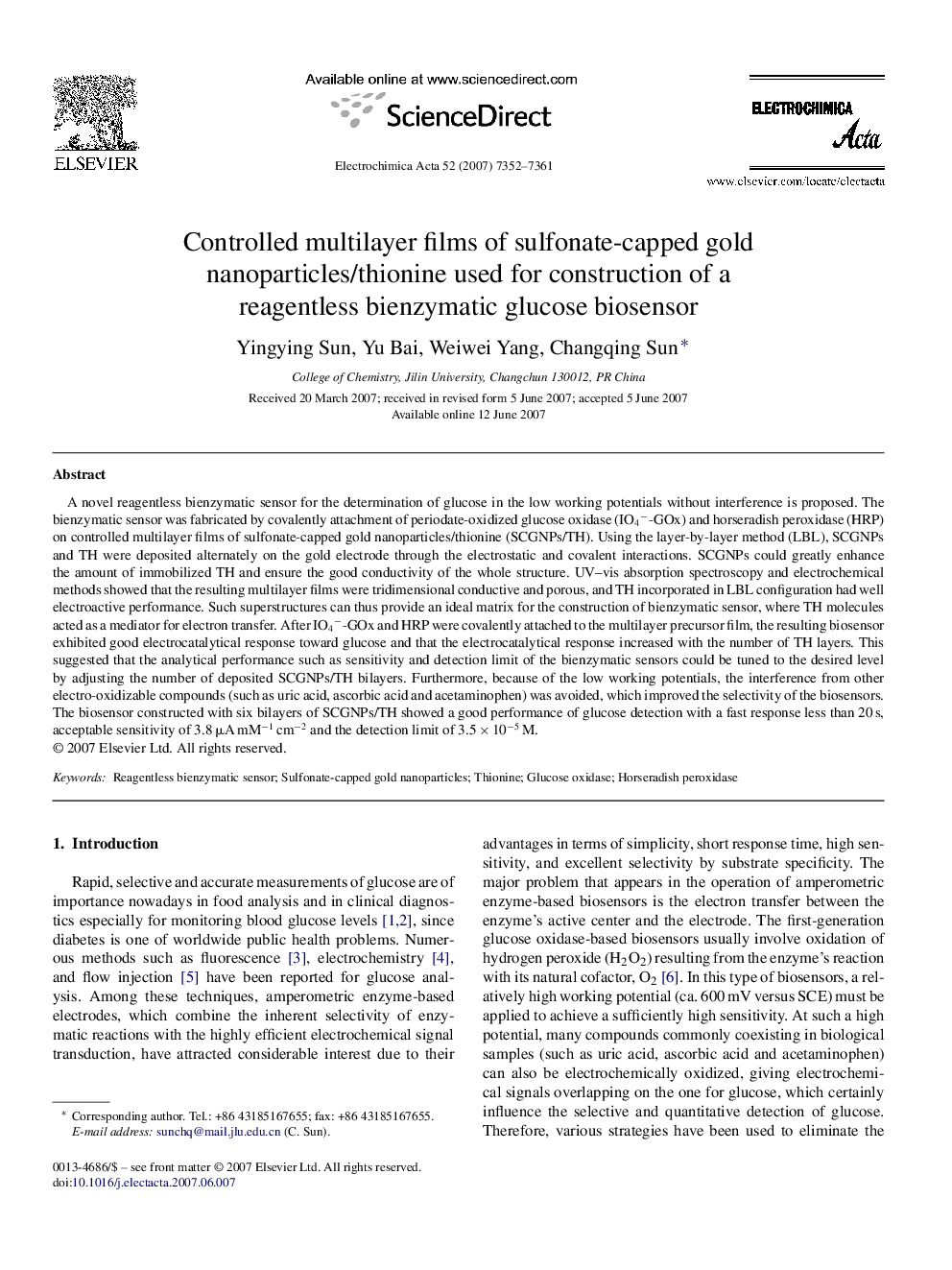| کد مقاله | کد نشریه | سال انتشار | مقاله انگلیسی | نسخه تمام متن |
|---|---|---|---|---|
| 193972 | 459781 | 2007 | 10 صفحه PDF | دانلود رایگان |

A novel reagentless bienzymatic sensor for the determination of glucose in the low working potentials without interference is proposed. The bienzymatic sensor was fabricated by covalently attachment of periodate-oxidized glucose oxidase (IO4−-GOx) and horseradish peroxidase (HRP) on controlled multilayer films of sulfonate-capped gold nanoparticles/thionine (SCGNPs/TH). Using the layer-by-layer method (LBL), SCGNPs and TH were deposited alternately on the gold electrode through the electrostatic and covalent interactions. SCGNPs could greatly enhance the amount of immobilized TH and ensure the good conductivity of the whole structure. UV–vis absorption spectroscopy and electrochemical methods showed that the resulting multilayer films were tridimensional conductive and porous, and TH incorporated in LBL configuration had well electroactive performance. Such superstructures can thus provide an ideal matrix for the construction of bienzymatic sensor, where TH molecules acted as a mediator for electron transfer. After IO4−-GOx and HRP were covalently attached to the multilayer precursor film, the resulting biosensor exhibited good electrocatalytical response toward glucose and that the electrocatalytical response increased with the number of TH layers. This suggested that the analytical performance such as sensitivity and detection limit of the bienzymatic sensors could be tuned to the desired level by adjusting the number of deposited SCGNPs/TH bilayers. Furthermore, because of the low working potentials, the interference from other electro-oxidizable compounds (such as uric acid, ascorbic acid and acetaminophen) was avoided, which improved the selectivity of the biosensors. The biosensor constructed with six bilayers of SCGNPs/TH showed a good performance of glucose detection with a fast response less than 20 s, acceptable sensitivity of 3.8 μA mM−1 cm−2 and the detection limit of 3.5 × 10−5 M.
Journal: Electrochimica Acta - Volume 52, Issue 25, September 2007, Pages 7352–7361